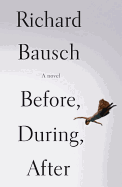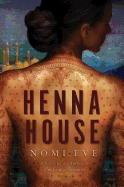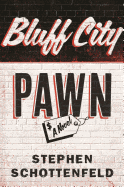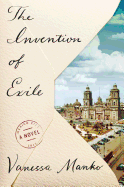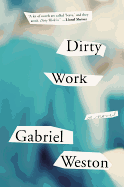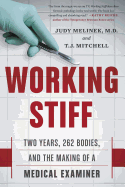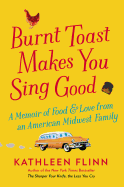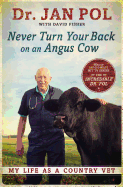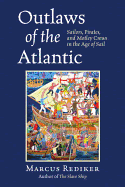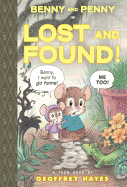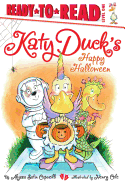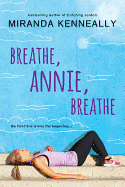_Sarah_Shatz.jpeg) |
| photo: Sarah Shatz |
Jess Row is the author of the story collections The Train to Lo Wu and Nobody Ever Gets Lost. Named one of Granta's Best Young American Novelists in 2007, he has won two Pushcart Prizes and a PEN/O. Henry Prize, and his work has appeared in The Best American Short Stories three times. He lives in New York and teaches at the College of New Jersey.
Row's debut novel, Your Face in Mine (Riverhead), is a poignant, provocative story about race and identity. After losing his wife and young daughter in a car accident, Kelly Thorndike returns to his hometown of Baltimore to work at a public radio station. There he crosses paths with Martin, a former high school classmate, a white Jewish kid who has undergone racial reassignment surgery and transformed into an African American man with a new name and personal history. Kelly agrees to write a book about Martin's life, embarking on a path with unforeseen twists and turns that leads him to question his own identity.
Your Face in Mine centers on an intriguing premise. Where did the idea for the novel originate?
Some years ago, in a used bookstore in Vermont, I picked up a book called Creating Beauty to Cure the Soul by Sander Gilman. (Who wouldn't pick up a book with a title like that?) It turned out to be about the early history of aesthetic surgery, and particularly rhinoplasty (that is, the nose job), which was invented by German Jewish surgeons as a way of erasing what they thought was the most prominent physical marker of Jewishness. Even as I was paging through the book in the bookstore, the idea came to me of writing a novel in which it was possible for anyone to alter or erase their racial origins through surgery.
Narratives of racial "passing" are very common in American literature, but nearly always these narratives are about a person of color passing as white; what had always fascinated me was the opposite--white people who are trying to leave their whiteness behind, out of guilt or curiosity or some fascination with "the other," or simply the aching feeling that some people have that their body of origin is not their actual authentic self. As a teenager in Baltimore, I had a close friend who, for a period, became wrapped up in hip hop as a form of racial disguise, and for years I'd wanted to write something about him. But I wanted to make the novel a contemporary novel, rather than a nostalgic look back at high school. So the idea came to me to have the protagonist of the novel return to Baltimore, after many years away, and encounter a friend who has erased his origins and remade himself, in a way that seems unthinkable and impossible--until it isn't.
The novelist Victor LaValle stated in a blurb praising Your Face in Mine: "Jess Row is going to start a lot of fights with this book! A white writer tackling race and class this honestly, this fearlessly? Talk about a rarity. So it's a relief that he's also one of the smartest, most observant contemporary writers around." Did you have any reservations about writing a novel "tackling race and class?" Do you anticipate any fights breaking out because of it?
There's a moment early in Your Face in Mine--chapter six--where Kelly effectively stops this story in order to unburden himself of his complicated, contradictory, highly ambivalent feelings about his own whiteness. The chapter ends with the line "and thus ends my confession." I wanted that chapter to represent (in a mildly comic or satirical way) the kind of reluctance and shame and awkwardness many white people feel about discussing their own racial experiences. And that certainly included me, before I started writing this book! I was intensely afraid of getting it wrong. And then I finally decided that I had to give myself permission to write into those feelings of awkwardness and hesitance and shame, and try to represent them on the page. John Updike once said, speaking of Arundhati Roy's The God of Small Things, that certain novels invent the language in which they are written. At times I felt like I was inventing a language in which Kelly could articulate feelings that white Americans don't normally articulate. To me, that part of the novel is almost as speculative as the parts about medicine and surgery.
At another point, later in the novel, Kelly tries to imagine who he would choose to be, if he had racial reassignment surgery, and the person he thinks of first, bizarrely, is the actor Takeshi Kitano (imagine a Japanese Robert DeNiro). I hope that anyone who reads the novel can take a moment to meditate on the same question: "Who would I choose to be?" It can be a funny, but also very revealing, experience. To me, it speaks to the central interest of the book, which is about these very deep and complex racial images and attractions that we all can relate to, about the memories and associations and dreams that make up identity on the most primal level. It made me uncomfortable, at times, to write it, and I hope and expect it will make readers a little uncomfortable too. But I'm really hoping we can have conversations and exchanges, even painful ones.
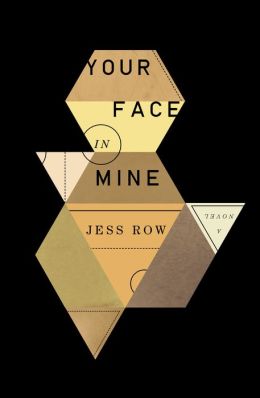 Tell us about the novel's narrator, Kelly Thorndike. Did he spring entirely from your imagination or does he have any real-life counterparts? Did you know from the start where he was headed or did his surprising path unfold during the writing process?
Tell us about the novel's narrator, Kelly Thorndike. Did he spring entirely from your imagination or does he have any real-life counterparts? Did you know from the start where he was headed or did his surprising path unfold during the writing process?
Kelly is autobiographical in some ways: like me, he spent time in China as a young man and has an abiding interest in Chinese literature and culture, and like me, he struggled with his own identity as a white person in a very racially charged and violent atmosphere as a teenager in Baltimore in the early 1990s. Also like me, he's married to a woman of a different ethnicity and has a multiracial child. But his life trajectory is much more extreme than mine has been--his wife and daughter are killed in a car accident before the novel begins--and as a result, out of the deep traumatic wound and isolation he finds himself in, he's set up to make the very extreme decision he makes. I definitely did not know that he was going to take that particular leap beforehand--in fact I only barely knew how the ending would play out until I'd finished writing it.
Martin comments to Kelly about racial reassignment surgery, "In a hundred years this'll be as common as a nose job." Based on what you learned from the doctors and scientists you interviewed, how far on the horizon is racial reassignment surgery--the kind of complete, authentic transformation that Martin makes in the story?
There was very recently a story online about a teenager from Brazil who went to live in South Korea and, after a certain amount of time, began to have plastic surgery procedures deliberately to make himself look "Korean." The photographs accompanying the story show someone who has radically altered his face to take on more normative East Asian features. South Korea is probably the place in the world where plastic surgery is most popular and normative, and it's not surprising that the first steps toward intentional racial reassignment surgery (if that's what it is) are taking place there.
The surgeons I spoke to in Bangkok were not at all surprised when I described the premise of Your Face in Mine. One of them said to me, "What you're describing already exists, but we don't use that word for it." He was referring to the kinds of surgery and chemical treatments that are widely used in East Asia, especially by women, to achieve a certain look that can be described as more "Caucasian"--pale skin, rounder eyes, dyed hair, as well as breast and buttock enhancements. There are celebrities whose "before" and "after" photos, available online, show a transformation that makes them almost unrecognizable. Although there's some criticism of these public figures, there seems to be a general social consensus that this kind of radical transformation (at least radical from my point of view) is completely acceptable and desirable. As Julie-nah in Your Face in Mine observes, racial reassignment can be a very profitable business, and a very potent form of class privilege.
That said, all the plastic surgeons I interviewed said that the existing techniques of plastic surgery can produce only a very limited number of believable transformations. The same is true of the existing treatments for permanently lightening and darkening skin--they exist but have never been widely tested or used for these purposes. So my conjecture is that the kind of universal racial reassignment that occurs in Your Face in Mine is probably decades away, if it ever comes to pass, and that what we'll begin to see is more incremental steps in that direction. I think there's also going to be a broader global discussion of the ethics and psychology of trans-racial surgery, and whether there is such a thing as racial dysphoria (equivalent to gender dysphoria).
What's next for you in the writing arena?
This is always a hard question to answer, but I'm working on a longer, more layered novel about climate change, Palestine, Buddhist epistemology and rent-controlled apartments on New York's Upper West Side, among other things. That sounds like a joke, but I'm hoping it won't be. --Shannon McKenna Schmidt
Jess Row: Tackling Race and Class




_Sarah_Shatz.jpeg)
 Tell us about the novel's narrator, Kelly Thorndike. Did he spring entirely from your imagination or does he have any real-life counterparts? Did you know from the start where he was headed or did his surprising path unfold during the writing process?
Tell us about the novel's narrator, Kelly Thorndike. Did he spring entirely from your imagination or does he have any real-life counterparts? Did you know from the start where he was headed or did his surprising path unfold during the writing process?